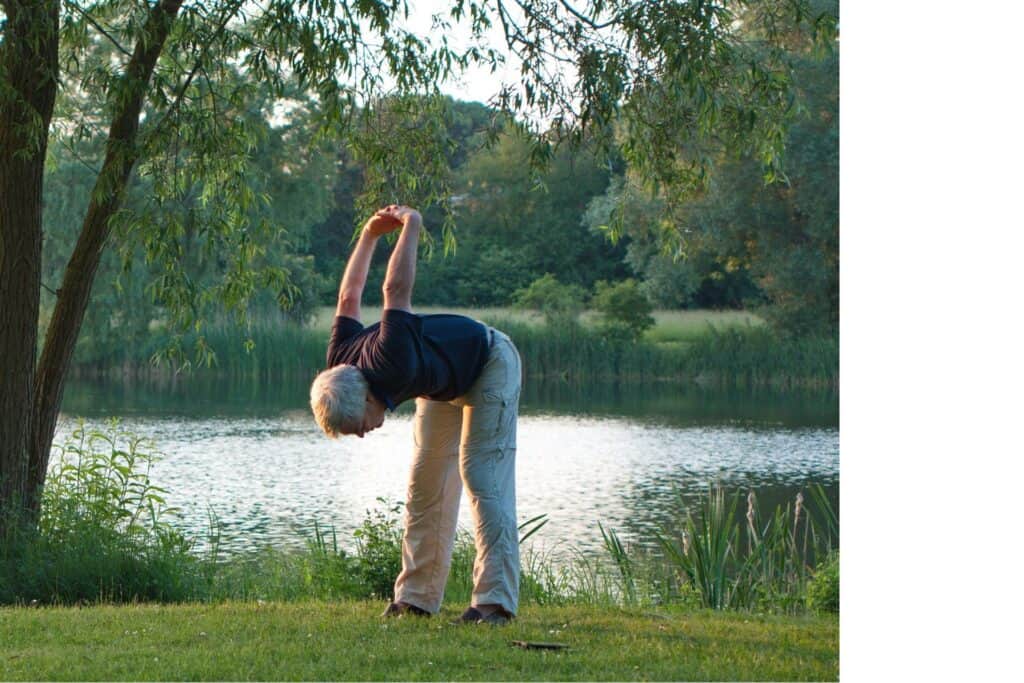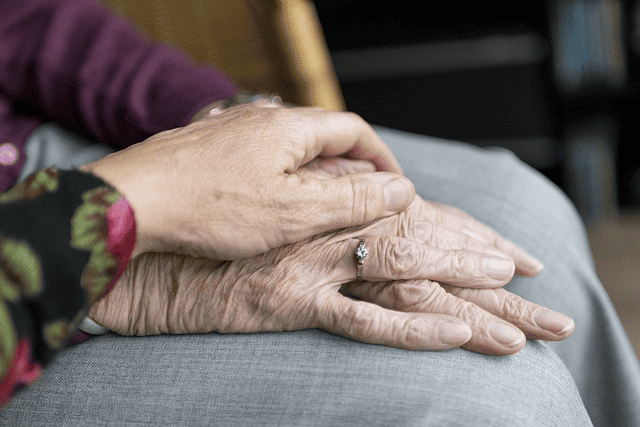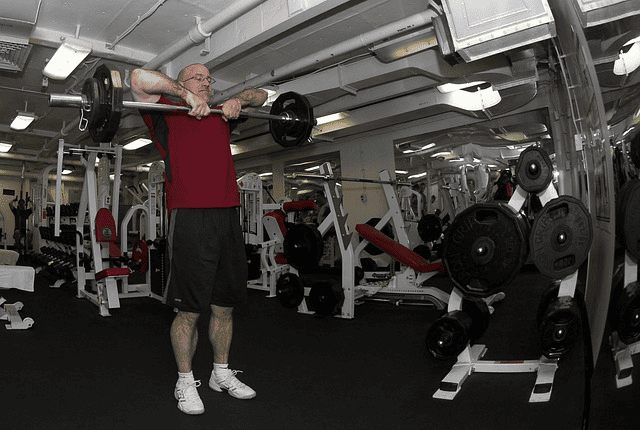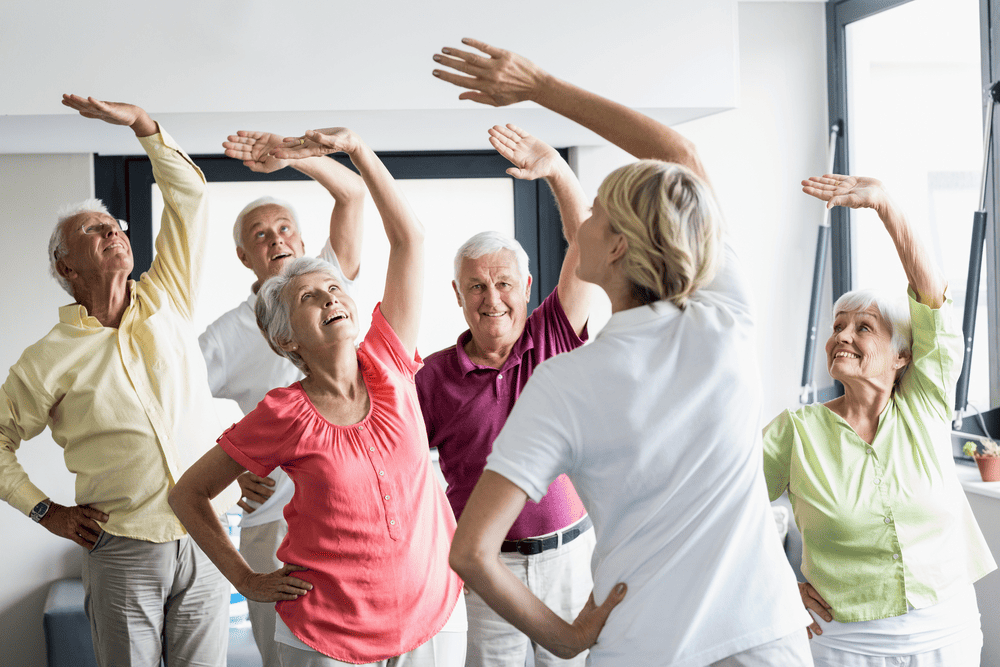It’s never too late to unlock the life-changing health benefits of exercise for seniors! Regular physical activity can greatly enhance your quality of life, keeping you strong, sharp, and socially engaged.
Discover these benefits as we discuss how exercise can impact your physical and mental well-being, learn about various recommended exercises, and explore ways to participate in programs tailored to your needs. Ready to embark on a journey towards a healthier, happier you? Let’s dive in!
Key Takeaways
-
Unlock the many health benefits of exercise for seniors: strengthen muscles and joints, combat chronic illnesses, reduce cardiovascular disease risk & increase energy.
-
Enhance mental well-being with physical activity to alleviate depression & anxiety while boosting cognitive function.
-
Consult a healthcare professional and listen to your body’s signals for safe exercising tailored to your needs!
Physical Advantages of Exercise for Seniors

Embracing an active lifestyle can have a profound impact on your overall health and well-being. Older adults can maintain their health, reduce the risk of noncommunicable diseases, and delay the onset of dementia by staying physically active.
But the benefits don’t stop there! Exercise has the power to strengthen your muscles and joints, combat chronic illnesses, and enhance cardiovascular health.
Picture yourself moving effortlessly through your daily activities, free from joint pain and stiffness. Strengthening muscles and joints, relieving arthritis pain, and improving mobility are some of the benefits regular moderate aerobic exercise can offer. Plus, engaging in moderate physical activity can help you take charge of chronic illnesses, empowering you to live a more fulfilling and active life.
Regular exercise can reduce the risk of cardiovascular disease, provide more energy, and help the body fat maintain a healthy cardiovascular system.
Strengthening Muscles and Joints
In your golden years, building strength becomes vital for maintaining health and activity. Exercise can improve both muscle strength and bone health in aging adults, setting the foundation for a strong, agile body. For older adults with arthritis, regular low-impact aerobic exercise and strength training can help reduce the strain on inflamed and aching joints, allowing strengthened muscles to bear more of the burden.
Imagine being able to move with ease, enjoying daily activities without the limitations of joint pain. This can be your reality! Incorporating strength training exercises into your routine can help prevent falls, exercise helps improve bone health, and keep you on your feet for years to come.
Combating Chronic Illnesses

Physical activity becomes a powerful ally in combating chronic illnesses, which tend to increase as we age. Engaging in exercise can significantly improve your overall health, leading to a more fulfilling and active lifestyle. By taking charge of chronic illnesses through regular physical activity, seniors can experience a range of positive outcomes, including:
-
Decreased pain
-
Enhanced well-being
-
Improved cardiovascular health
-
Increased strength and flexibility
-
Better management of chronic conditions
Stretching exercises, for example, can be an excellent way for seniors with osteoarthritis or heart disease to stay healthy. Other activities, such as tai chi, walking backward, or practicing standing on one leg, can also help improve balance and coordination, further supporting your body’s ability to combat chronic illnesses.
Enhancing Cardiovascular Health
Improved cardiovascular health stands among the most significant benefits of regular exercise. A combination of cardio and strength training can work wonders for your heart, reducing the risk of heart disease and promoting better energy levels.
To keep your heart in top shape, try the following activities:
-
Brisk walking
-
Running
-
Swimming
-
Cycling
-
Playing tennis
-
Jumping rope
These activities can get your heart pumping, improve cardiovascular health, and give you the energy to enjoy your day-to-day life with vigor and enthusiasm.
Mental Health Benefits of Exercise

But the benefits of exercise extend far beyond the physical realm. Alleviating depression and anxiety, boosting cognitive function, and promoting social interaction are some positive impacts on mental and physical health from regular physical activity.
Exercise can help you feel better by releasing endorphins, improving sleep, and providing a sense of accomplishment, all of which can reduce symptoms of depression and anxiety. Plus, exercising can improve memory, concentration, and decision-making skills by increasing blood flow to the brain and stimulating hormone production crucial for brain health.
In addition to these mental health benefits, exercise can also improve physical and mental health by:
-
Fostering meaningful relationships
-
Facilitating social interaction
-
Providing an opportunity to meet new people
-
Participating in group activities
Imagine connecting with others over a shared passion for fitness, forming lasting bonds, and enhancing your mental well-being together.
Alleviating Depression and Anxiety
Exercise can help manage depression and anxiety, leading to an improved mood and a heightened sense of well-being. Activities like yoga and tai chi are excellent choices for seniors looking to improve their mental well-being, as they can help enhance flexibility, balance, strength, and reduce stress levels.
By incorporating these activities into your routine, you can experience a noticeable improvement in your mood and mental clarity. So, why not give it a try and see how exercise can help transform your mental health, sleep patterns and overall well-being?
Boosting Cognitive Function
As we age, the importance of maintaining cognitive function increases. Here are some strategies to help keep your mind sharp and focused:
-
Regular physical activity can potentially slow the progression of dementia and Alzheimer’s disease.
-
Brain games and puzzles can provide a cognitive boost by stimulating different cognitive functions, such as executive function and processing speed.
-
Combining these activities with regular physical exercise can lead to improved cognitive performance in older adults.
By staying active and engaging in mentally stimulating activities, you can take charge of your cognitive health, ensuring a sharper mind and a more fulfilling life.
Promoting Social Interaction
Fostering social connections and combating loneliness are vital roles played by physical activity. Group exercises like art classes or gardening can provide seniors with the opportunity to meet new people and engage in meaningful social interactions. These connections can help reduce stress, boost mood, and build self-esteem, all of which contribute to improved mental health.
By participating in group activities and connecting with walking group of others, you can create a supportive network of friends who share your passion for staying active and maintaining a healthy lifestyle.
Recommended Exercises for Seniors

With a clear understanding of the myriad benefits of exercise for seniors, it’s time to explore some exercises recommended for maintaining an active and healthy lifestyle. Aerobic activities, various strength training routines, and balance and flexibility exercises are all fantastic ways to maintain your physical and mental well-being.
From water aerobics and chair yoga to full resistance training, band workouts and pilates, there’s an exercise option suited for every individual and ability level. So, let’s dive deeper into each category and discover the perfect workout routine for you!
Aerobic Activities
Maintaining cardiovascular health and managing weight are the key benefits of aerobic activities. Activities like walking, swimming, or cycling can help seniors stay fit and healthy while boosting their heart health. These activities can be easily tailored to your individual fitness level and preferences, providing a fun and engaging way to stay active.
If high-impact activities cause discomfort or pain, consider exploring low-impact options like cycling or swimming to stay active and healthy without compromising your well-being. Remember, the key is to find activities you enjoy and that work best for your body.
Strength Training
Strength training exercises, using weights or resistance bands, can help seniors improve muscle mass and their bone strength and density, providing a strong foundation for a healthy and active lifestyle. Some examples of strength training exercises for seniors include:
-
Squats
-
Deadlifts
-
Chest press (bench press)
-
Rows
-
Lat pull-downs
-
Shoulder press
-
Planks
These exercises can help seniors stay active and healthy.
By incorporating strength training into your routine, you can build strong muscles and bones, improving your overall quality of life and giving you the confidence to tackle daily activities with ease.
Balance and Flexibility Exercises
To prevent falls and maintain overall health, improving balance and flexibility is crucial. Activities like yoga and tai chi can help seniors enhance their coordination and balance, reducing the risk of falls and injuries.
Heel raises, ankle movements, rock the boat, straight leg lifts to the back, march in place, foot taps, head rotations, standing marches, sit-to-stands, single-leg balance, and tree pose are some excellent balance and flexibility exercises for seniors. Incorporating these exercises into your routine can help you achieve improved strength, stability, and balance, providing a foundation for a healthy, active lifestyle.
Participating in Exercise Programs

For those looking to join a community of like-minded individuals pursuing a healthy lifestyle, participating in exercise programs can be a great option. Seniors can take advantage of various engaging exercise programs through community-based programs or online resources. These programs provide a supportive environment for seniors to engage in physical activity and socialize with others, promoting overall well-being.
Whether you prefer the camaraderie of group classes or the convenience of online resources, there’s an exercise program tailored to your needs and preferences. Let’s explore some options to help you stay active and connected.
Community-Based Programs
Community-based exercise programs, such as SilverSneakers or Fit & Strong, provide seniors with a supportive environment to engage in physical activity and socialize with others. These programs offer a range of exercise options tailored to your abilities and preferences, helping you stay active, healthy, and connected with your community.
In addition to these programs, other community-based services like adult day care services, Home and Community-Based Supportive Services (HCBS), and Program of All-inclusive Care for the Elderly (PACE) can provide further support and resources for seniors looking to maintain an active lifestyle.
Online Resources
For those who prefer the convenience of exercising at home or on the go, online resources like workout videos and virtual fitness classes can provide accessible exercise options tailored to your needs. These resources allow you to engage in physical activity at your own pace, in the comfort of your own space.
Several online resources cater specifically to seniors, including:
-
DailyCaring
-
AgingCare
-
Eldercare Locator
-
Resources for Seniors
-
AARP
-
Medicare
These websites offer valuable information and resources to help you maintain an active and healthy lifestyle.
Safety Tips for Senior Exercise
Despite the essential role of exercise in maintaining overall health and well-being, ensuring safety during physical activities is crucial. Consulting with a healthcare professional and paying attention to your body’s signals can help you stay safe while exercising.
By following these safety tips, you can make the most of your exercise routine, maximizing its benefits while minimizing the risk of injury. Let’s delve deeper into these tips to help you safely enjoy the many advantages of regular physical activity.
Consulting with a Healthcare Professional

Consultation with a doctor or a physical therapist is crucial to ensure safety and appropriateness for your individual needs before embarking on a new exercise routine. These professionals can provide personalized guidance and recommendations tailored to your abilities and health conditions, helping you maximize the effectiveness of your exercise routine.
By taking the time to consult with a healthcare professional, you can make informed decisions about your own exercise regimen and routine, ensuring your safety and promoting your overall well-being.
Listening to Your Body
Listening to your body and adjusting your exercise routines and routine as needed is one of the most important aspects of exercising safely. Here are some tips to help you exercise safely:
-
Start slow and gradually increase your exercise intensity
-
Take breaks when needed
-
Pay attention to any pain or discomfort
-
Ensure you’re getting enough protein
-
Prioritize safety and security
-
Actively listen to your body’s signals
By paying close attention to your body and adjusting your exercise routine as needed, you can avoid injury and maintain overall health, allowing you to fully enjoy the many benefits of regular physical activity.
Summary
Regular exercise offers a myriad of physical and mental health benefits for older adults. From strengthening muscles and joints to boosting cognitive function and fostering social connections, staying active is key to enjoying a healthy, vibrant life.
By participating in aerobic activities, strength training, and balance and flexibility exercises, you can unlock these life-changing benefits, ensuring a fulfilling and active lifestyle. Remember to consult with a healthcare professional and listen to your body to stay safe during your exercise journey. So, why not start today and embrace the power of exercise to transform your life?
Frequently Asked Questions
Why is exercise important for seniors?
Exercise is essential for seniors to maintain their physical and mental health, as it can help reduce the risk of chronic disease, alleviate the symptoms of osteoarthritis pain, improve balance and coordination, keep blood pressure, strengthen bones, and improve cognitive function. It can even lower the risk of falls and help older adults stay independent longer.
What happens if elderly don’t exercise?
Without regular, vigorous exercise afterwards, elderly people may suffer from reduced muscle mass and strength, reduced coordination and balance, and reduced joint flexibility and mobility. This can lead to a host of health problems. This could be a single paragraph.
What are the 5 most important benefits of exercise?
Regular exercise provides numerous benefits for your overall health, including improved brain health and memory, better weight management, reduced risk of chronic diseases, better skin health, increased energy levels, improved mental health and mood, and better thinking and judgment skills. Make physical activity a priority to maximize these invaluable benefits!
What are some recommended exercises for seniors?
Staying active is important at any age, so why not start now? Aerobic activities, strength training, and balance and flexibility exercises are all great options for seniors to keep their bodies healthy and strong.
What safety tips should seniors follow when exercising?
For seniors to stay safe when exercising, it’s important to consult with a healthcare professional and listen to their body. Stay mindful of any pains or discomforts and adjust accordingly.
